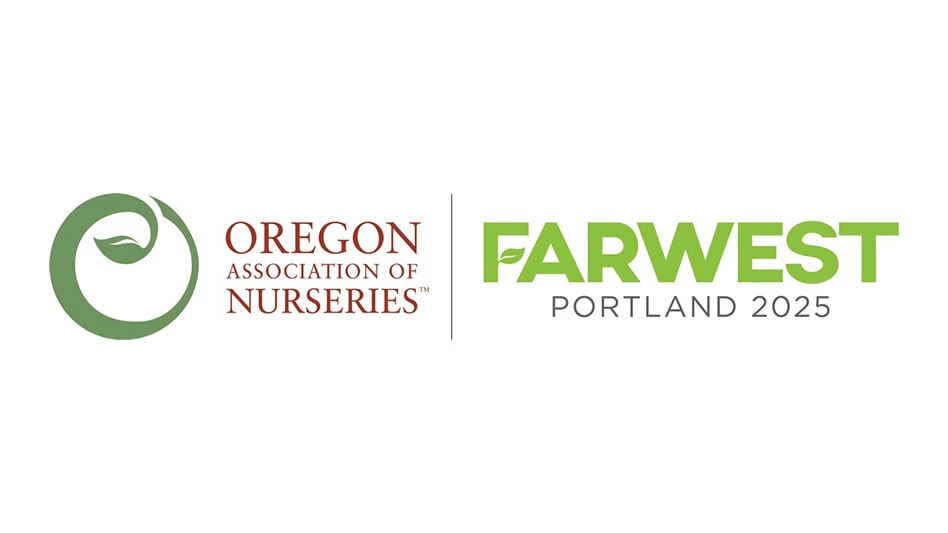 Sometimes the changes in the industry can seem overwhelming to you. With the economy hitting consumers hard, the past few seasons have been difficult, to say the least. As a result, more consolidation has occurred, and many smaller players who couldn’t adapt had to close up shop. Customers aren’t putting in as many pre-orders, making you grow more on speculation and hoping it sells. Add to the mix, a changing demographic of younger people looking to buy their plants from big-box stores they’re already at rather than making an extra trip to locally owned garden centers.
Sometimes the changes in the industry can seem overwhelming to you. With the economy hitting consumers hard, the past few seasons have been difficult, to say the least. As a result, more consolidation has occurred, and many smaller players who couldn’t adapt had to close up shop. Customers aren’t putting in as many pre-orders, making you grow more on speculation and hoping it sells. Add to the mix, a changing demographic of younger people looking to buy their plants from big-box stores they’re already at rather than making an extra trip to locally owned garden centers.
It’s a lot of factors all at once, and it’s enough to make your head spin. So as you look out at the industry as it stands right now, how do you know where to go? Who should you be selling to? Where’s the market heading and where are the greatest opportunities for higher margins and growth? In March, Greenhouse Management conducted a survey of its readers to try to find some answers to these pressing questions. In that survey we learned that increasing your margins and boosting your bottom line are two of the biggest concerns you face in running your operations these days, so we talked to growers who sell to different constituencies to get their thoughts on where the opportunities are for growth.
.jpg)

There’s a lot of debate about where the most profitable areas to be selling to are, and some say it’s big-box stores. When it comes down to it, big-box stores are somebody’s customer. They may not be yours, but they’re somebody’s. Somebody perhaps like you, trying to provide for his or her family. And there may not be large quantities of growers supplying this area – only 2.1 percent of survey respondents said box stores were their primary customers – but there are people out there where this is the area that’s providing their operations’ revenue and growth.
When it comes down to it, the box stores are a major, growing player in the industry.
“The box stores definitely have an impact on independent garden centers, no question about it,” says Gary W. Vogel, managing partner for East Coast Nurseries Inc., in Riverhead, N.Y. “For the masses, the general buying public, they’re in those stores anyway. They see the prices as being good, and it’s easy, so … the [growers] that supply them are probably the most profitable right now. It’s hard to argue that they’re not having a pretty big impact.”
Vogel says there are clear benefits from an operational standpoint.
“You can grow a large quantity of very few items,” he says. “The more items you carry, the more complexity you deal with and the more people you need and the more costly it is, so if you can grow fewer items in large quantities, it increases your profitability even more. And you’ve got guaranteed business – you have a contract for producing something. We grow most of our plants on spec and hope that people will come. The built-in-business is a solid base to operate from.”

Kevin Robson is the facilities manager for Robson’s Greenhouse in Belleville, Mich., which sells primarily to local garden centers and other greenhouses, and he thinks that – at least in the short-term – the largest profit margins would be with big-box stores.
“You can sell so much more quantity, but for longevity, there’s no better way to do it than how we’re doing it – building strong relationships with other garden centers and greenhouses, growing a good product that’s sustainable, and if you have a relationship that’s sustainable, it’s going to go on for years,” he says.
This seems to be one of the reasons why more growers aren’t getting into the big-box market. They prefer the care the products get from local retailers. But there are other reasons growers are leery about this potential growth market.
“One of them is the box stores hurt their long-time existing client base, and, in addition, the terms that the box stores put on are very onerous to a lot of growers,” Vogel says. “The growers that are large-scale and can produce large numbers of a smaller number of items are more prepared to deal with the box stores.”
Vogel’s company, on the other hand, carries a large variety of products in smaller quantities, so he’s not well-suited to serve the box store market. He sells about 60 percent of his products to rewholesalers and 40 percent to retail garden centers.



“It would be hard for us to get the kind of margin, that economies of scale, that we would need to be successful with the box stores,” he says.
The other challenge is the risk involved with only selling this customer chain.
“You’re putting all your eggs in one basket,” Vogel says. “They’re famous for having their whims and cancelling large orders and large contracts and leaving you hanging in the breeze.”
That’s something that Robson saw first-hand in Michigan.
“There was this greenhouse just a little bit ago that put on an $11 million expansion, and the very next year, they lost their Home Depot [business], and they went out of business,” says Robson. “The very next year we watched it all go to auction. That’s how you get hurt doing the contract stuff.
“If they can get a flat of flowers for $4.50, and you’re selling it to them for $5, they’ll drop you like a hot potato. They couldn’t care less about you or your family or what you put into your business.”
But perhaps the real reason that more growers aren’t moving into this area is that maybe it’s not really the biggest area of growth in the industry. There’s no question that the big-box stores – whether you like it or not – are an important player in the industry. But of those surveyed, less than a quarter said that big-box was the biggest area of business growth for the industry. Marty Gerace is general manager of Welby Gardens Co. in Colorado, which sells primarily to independent garden centers and landscapers, and he speculates that big-box growers are actually doing lower margins.

“Those big boxes dictate what they’re going to pay, and now with pay-to-scan, that on its own takes away,” Gerace says. “You’re consuming all the losses.”
According to our survey, 29.4 percent of growers are operating on profit margins of more than 25 percent and 34 percent are operating on margins of between 11 and 25 percent – and all of those serve customers outside of the big-box base.
This seems to indicate that, long-term, higher margins are in other areas outside of big-box stores. So if growers aren’t changing their business models to start moving into the big-box realm, where is everyone actually selling to, exactly? Roughly a quarter of survey respondents sell to independent garden centers, about 14 percent to landscape contractors, and a whopping 59 percent sell to others, such as consumers directly, brokers, wholesalers, other growers, farmers’ markets and government institutions.
With those kinds of numbers, it’s clear that while increasingly more consumers may be buying at big-box stores, there’s plenty of other opportunities for sales out there. In fact, of those surveyed, 43.7 percent saw the biggest increases in business across the industry in that “other” category.
“I think the craze in our area in Southeastern Michigan is these small, localized markets,” Robson says. “There’s a lot of towns like Plymouth and all the suburbs of Detroit that have local farmers’ markets. People are selling everything there, and they’re huge, and they’re getting bigger. That’s kind of a niche market, but I think that’s a market we can get into.”
Gerace says the independent garden centers are the ones getting stronger in Colorado, and he says that the landscapers might start to see some uptake too.
“If they can recover from the empty buildings and that kind of stuff, because that went so far backwards, that’s probably where the biggest opportunity for growth is again,” Gerace says.
Another big factor is simply looking at how demographics are changing and instead of lamenting over those changes, recognize the business potential in them. While many people in the industry talk about the problem with the younger generation lacking an interest in gardening, Robson looks at it from a different standpoint.
“It’s a fallacy to believe that the next generation isn’t quite as interested,” he says. “They are interested. …There are things that are changing in the greenhouse industry. There’s not the customers that are coming in and buying 10 or 15 flats of impatiens and putting them around every tree in their yard. My generation, I’m only 25, we don’t have time for that. We don’t have time to go out and water all that stuff every day, but when it comes to hanging baskets and patio pots and stuff like that, those are excellent selling items.
“Cut back on bedding plants and invest more time and dollars into things that are easier to take care of like hanging baskets and patio pots. That’s where the market is going. To keep greenhouses and greenhouses and greenhouses of flats of flowers, it’s not the right thing to do now adays.”
It’s just a matter of getting away from what you may have always done and venturing into a possibly new market, and the interesting part is these are items that could provide growers higher margins than flats of flowers as well.
“Patio pots are a little bit more expensive and baskets are a little bit more expensive because you have to use cuttings,” Robson says. “The raw materials invested in are a little bit more expensive, but you do get a better profit out of them at the end of the day because you can sell them for $16 or $19 a piece. With a flat of flowers, you’re selling them for $9.99 – or whatever.”

Robson understands that change can be difficult — his family’s farm is a centennial farm, and the changes his father has made are things his grandfather probably never would have dreamed of putting in, but it keeps the family business moving forward and keeps them successful.
He says, “If what you’ve always done isn’t working, it needs to be changed.”

Explore the April 2012 Issue
Check out more from this issue and find your next story to read.
Latest from Greenhouse Management
- CEA Alliance celebrates bipartisan introduction of Supporting Innovation in Agriculture Act
- Dümmen Orange North America celebrating 25th anniversary in 2025
- Illinois Landscape Contractors Association changes name to Landscape Illinois
- 2025 Proven Winners Horticulture Scholarship applications now open
- ICL’s Gemini Granular herbicide now registered for use in California
- Eurazeo Planetary Boundaries Fund acquires Bioline AgroSciences
- Spring Meadow Nursery's Freedom Shelley finds joy in plants
- Leading Women of Horticulture: Dana Massey, Plantworks Nursery






